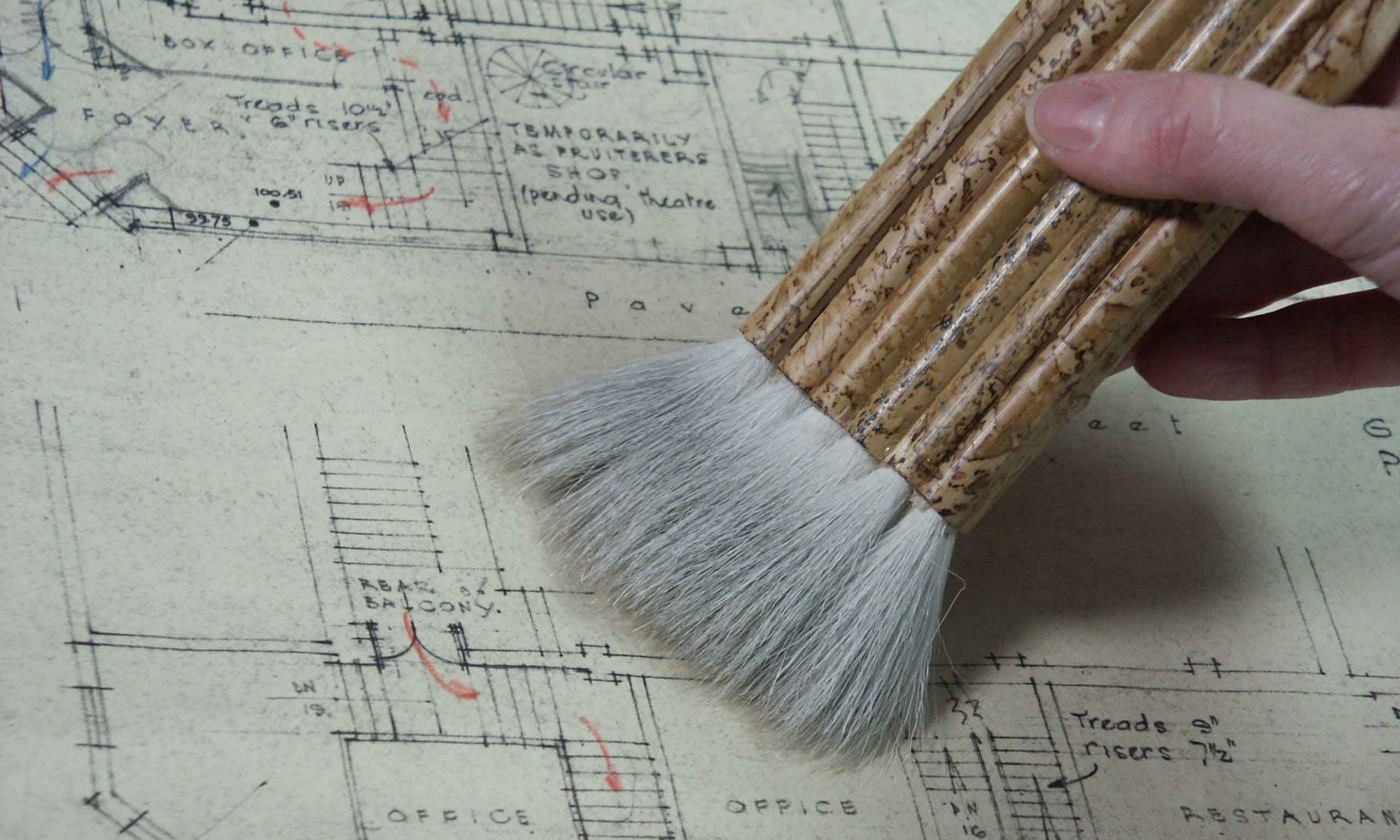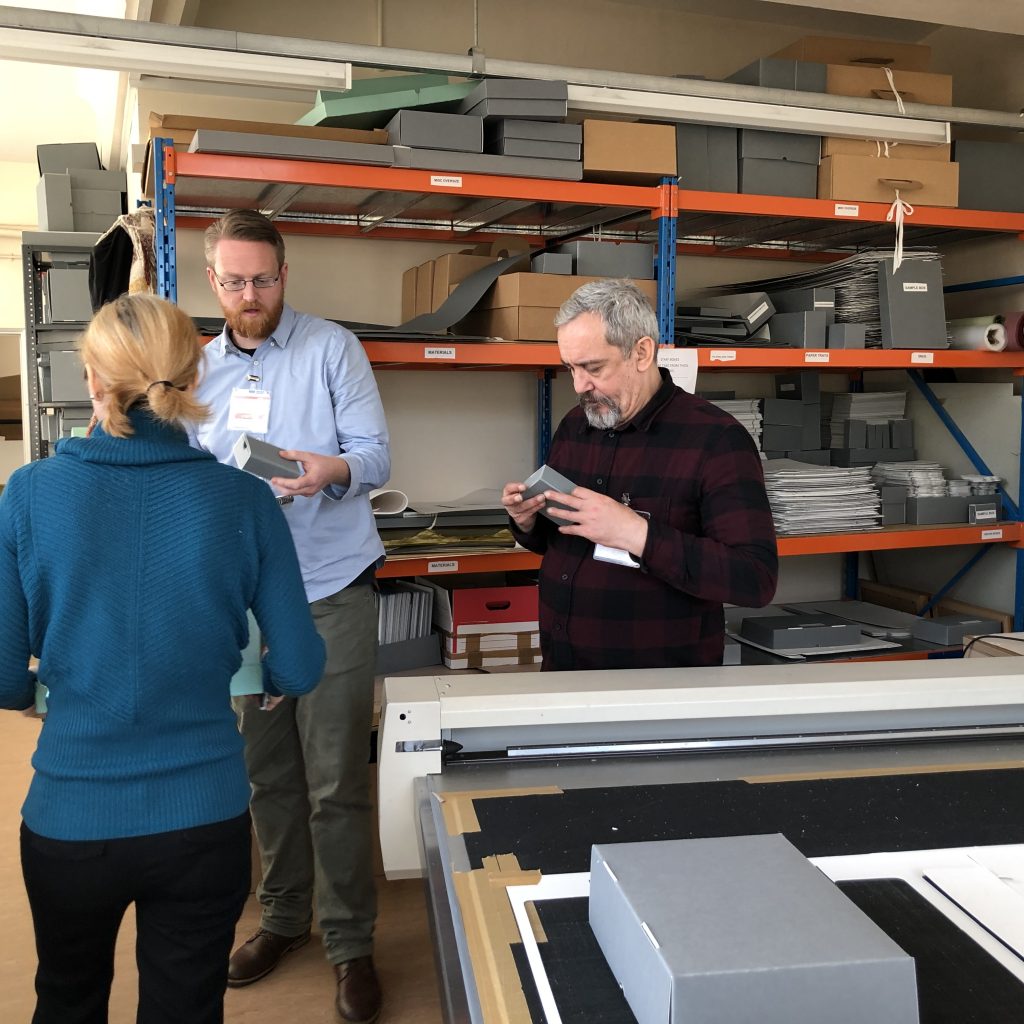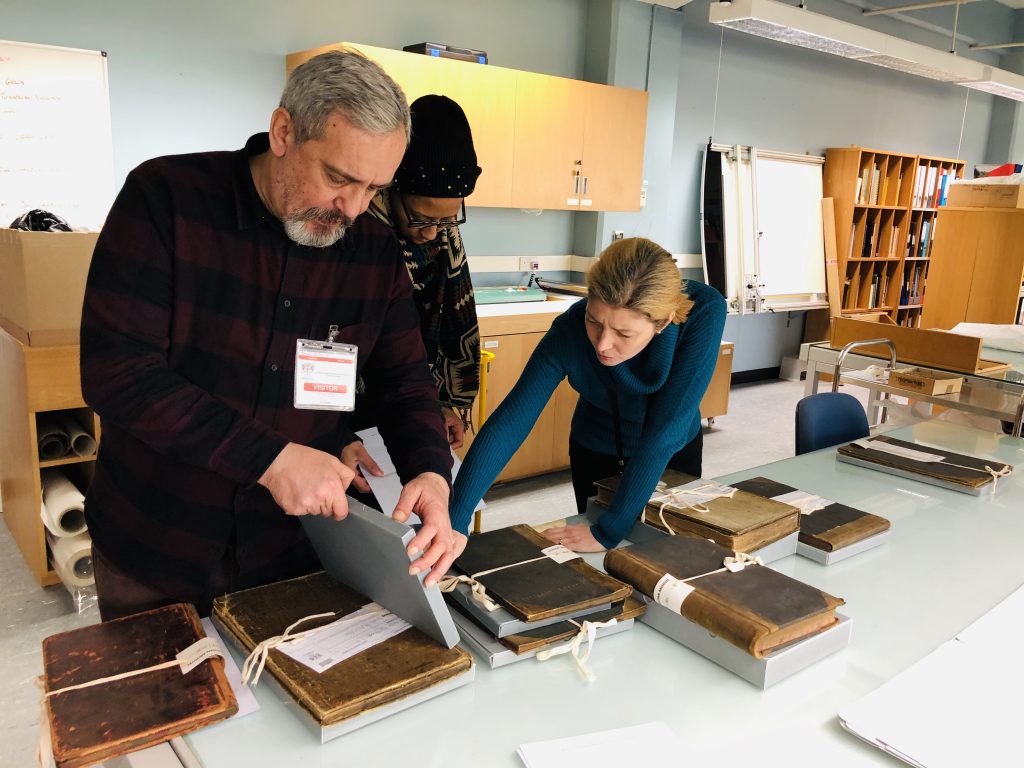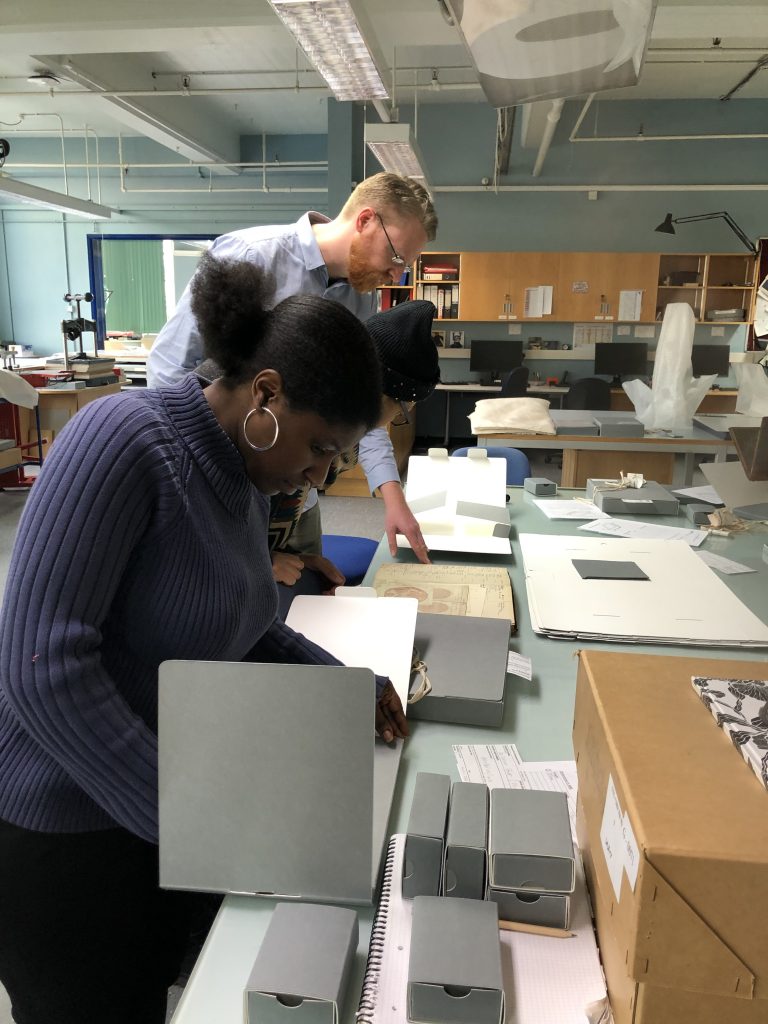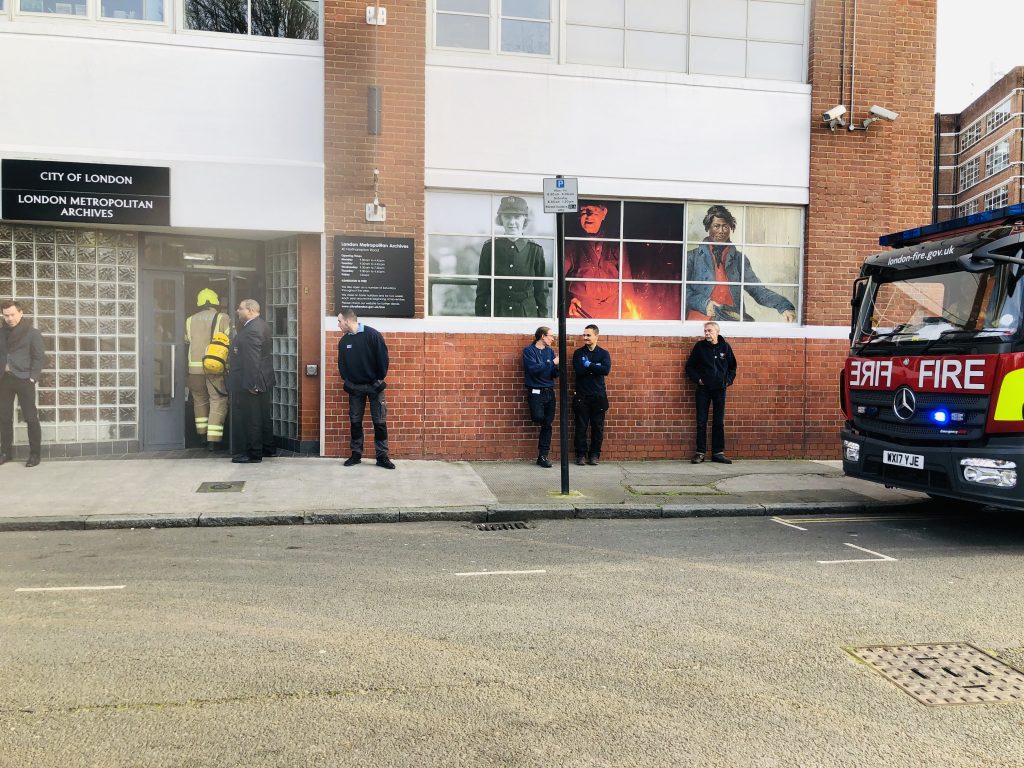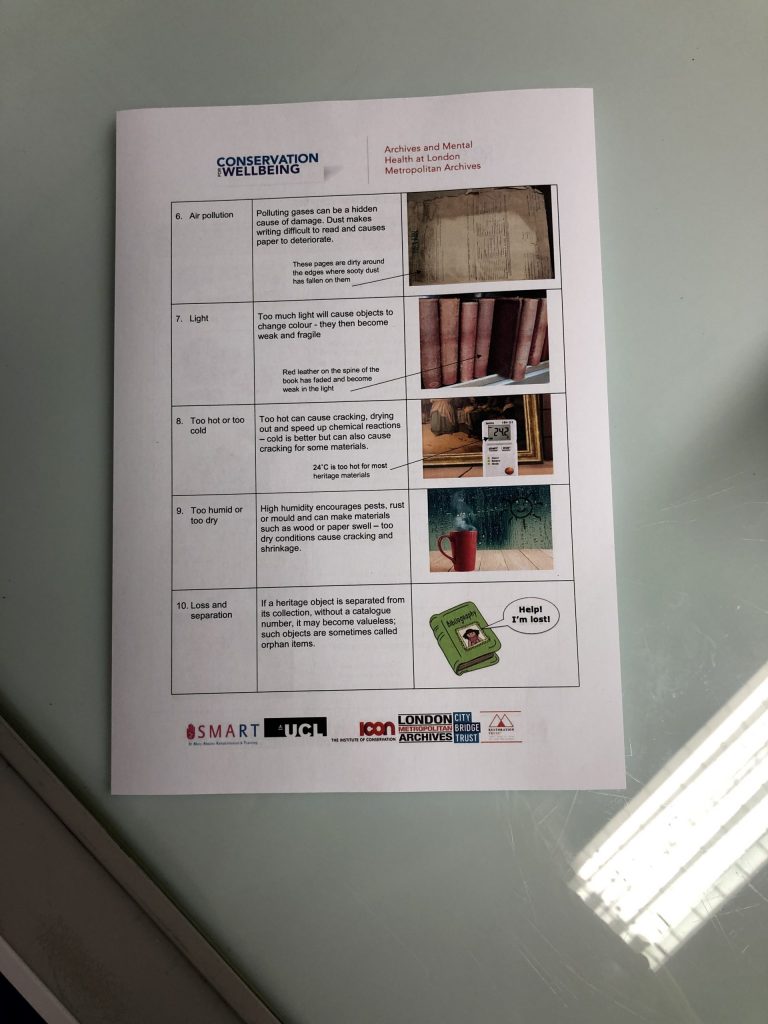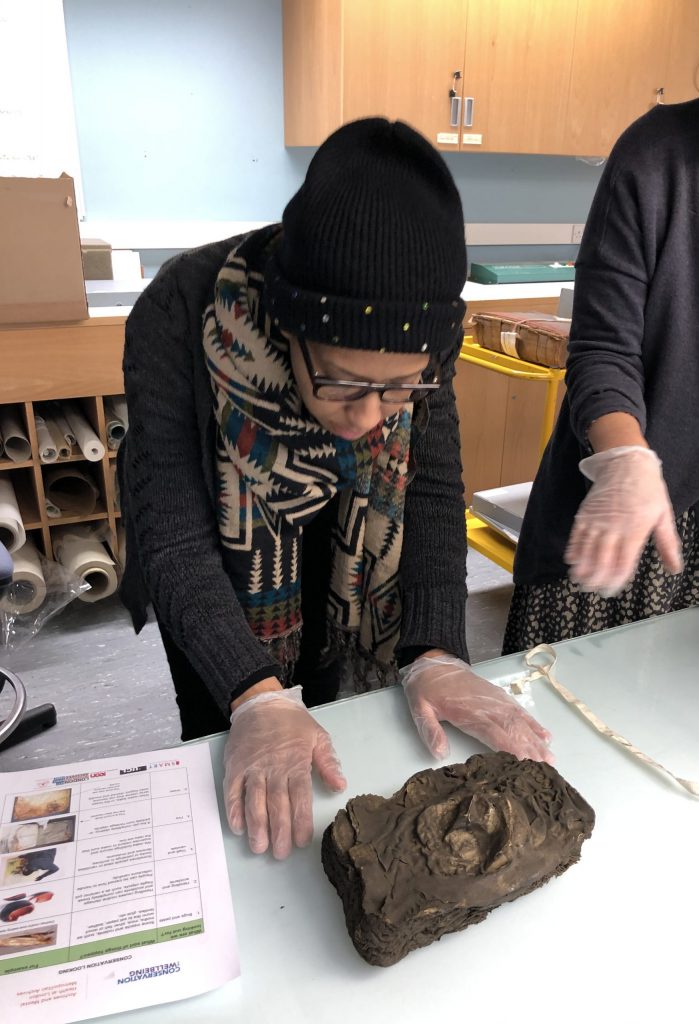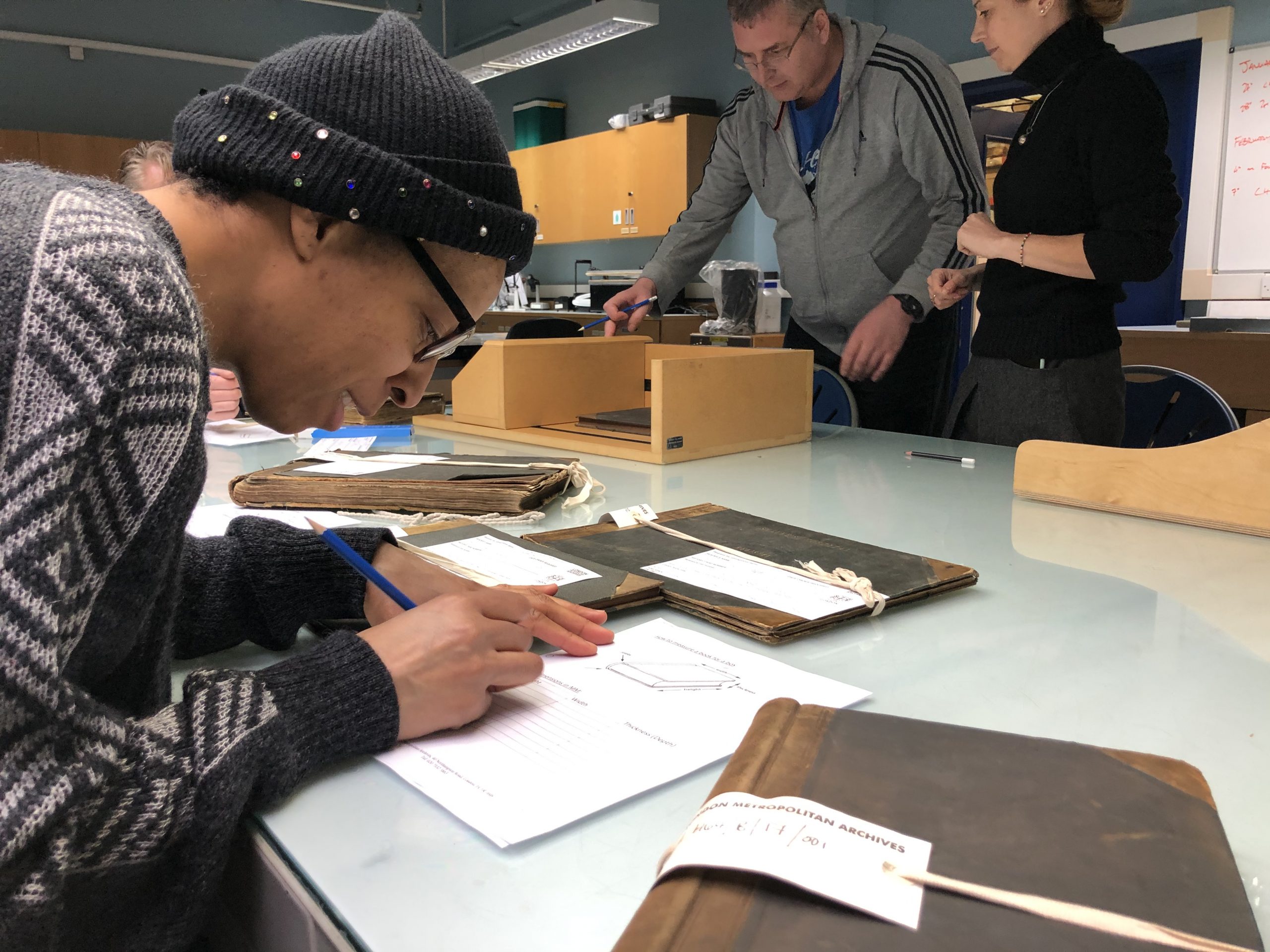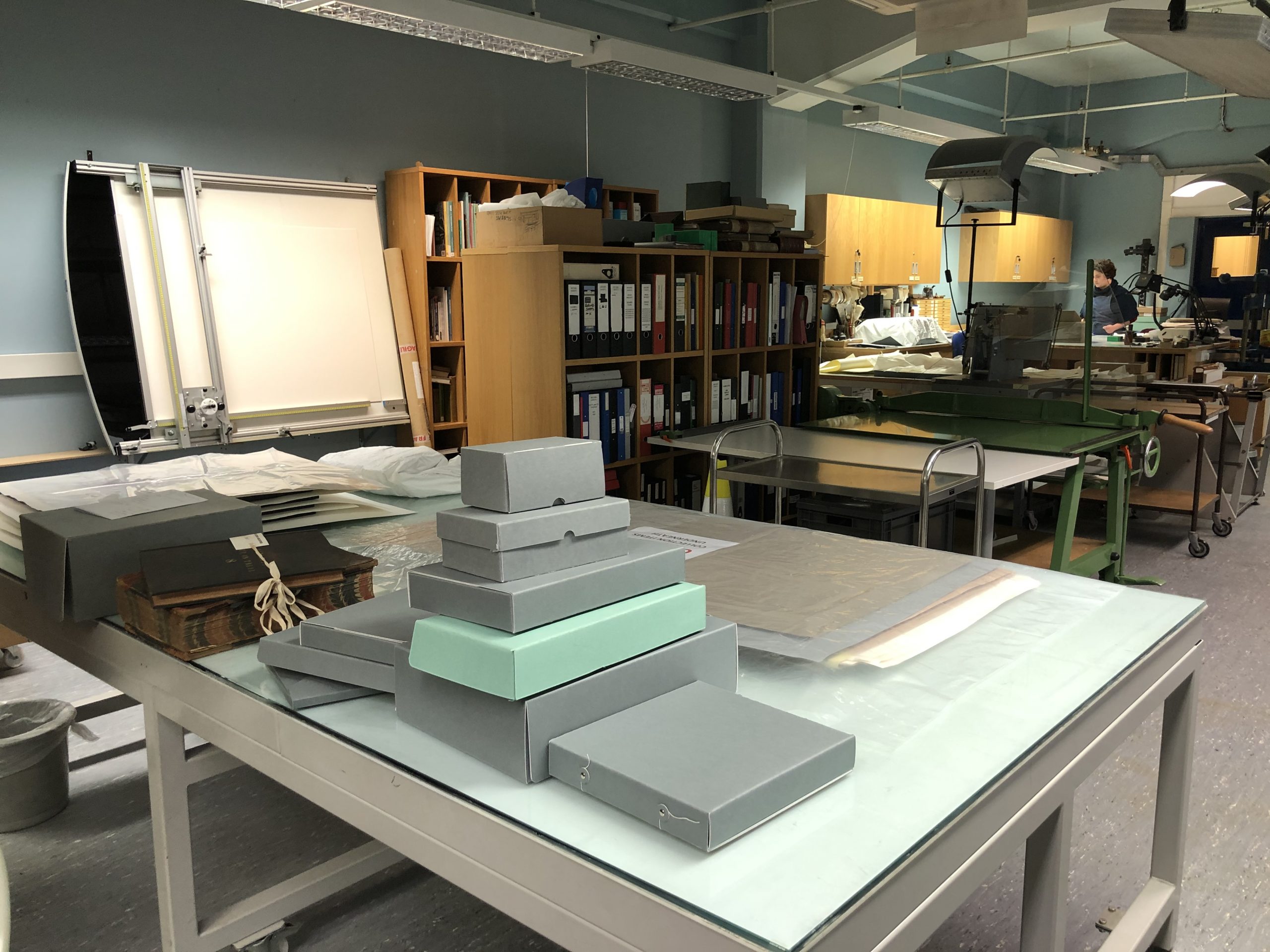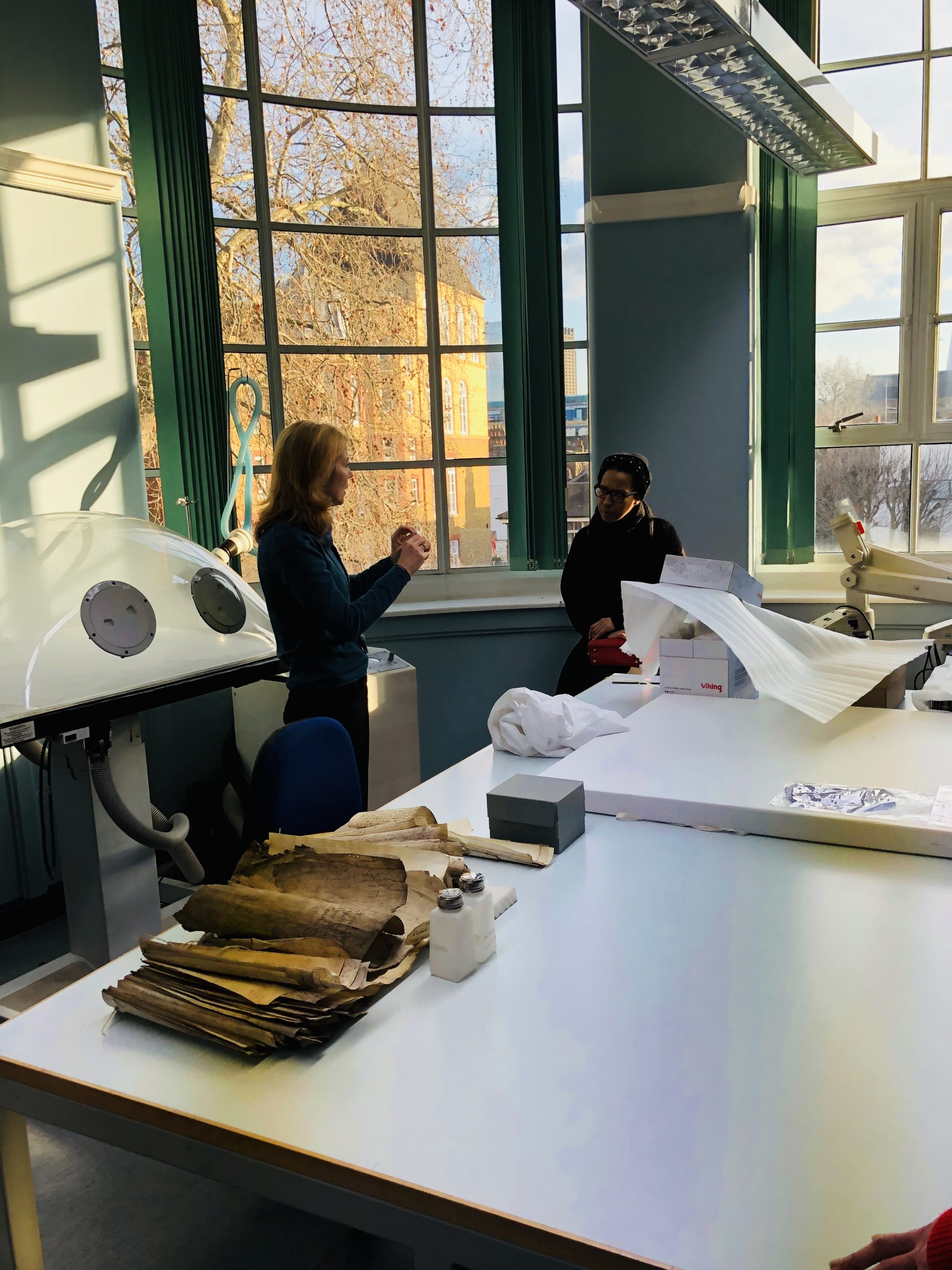Session 4 at LMA 21st February 2020. Conservation Cleaning
This week participants traveled from SMART to London Metropolitan Archives and back by taxi. This was easier than travelling by bus and everyone arrived in good spirits to have lunch with time to spare. Tom had made a huge number of sandwiches and after further biscuits and tea we moved into the Conservation Studio to start the workshop. As people headed towards the table around which we sit for the sessions it was clear that the studio is becoming a familiar space.
This session was called ‘Let Talk about Dirt’ and we did just that by discussing why dirt and dust is a problem and how it gets onto the registers.

Making trays out of archival paper
The most common way for dirt to get onto books and documents is by handling. When the asylum registers were consulted in the past by clinical and other staff, they will sometimes have turned the pages with greasy fingers, or left a book open so that dust fell onto it. Because of this we can look at a book now and see which pages were consulted most frequently – they are the ones with the most dirt or fingerprints on the corners of the page as it is turned.
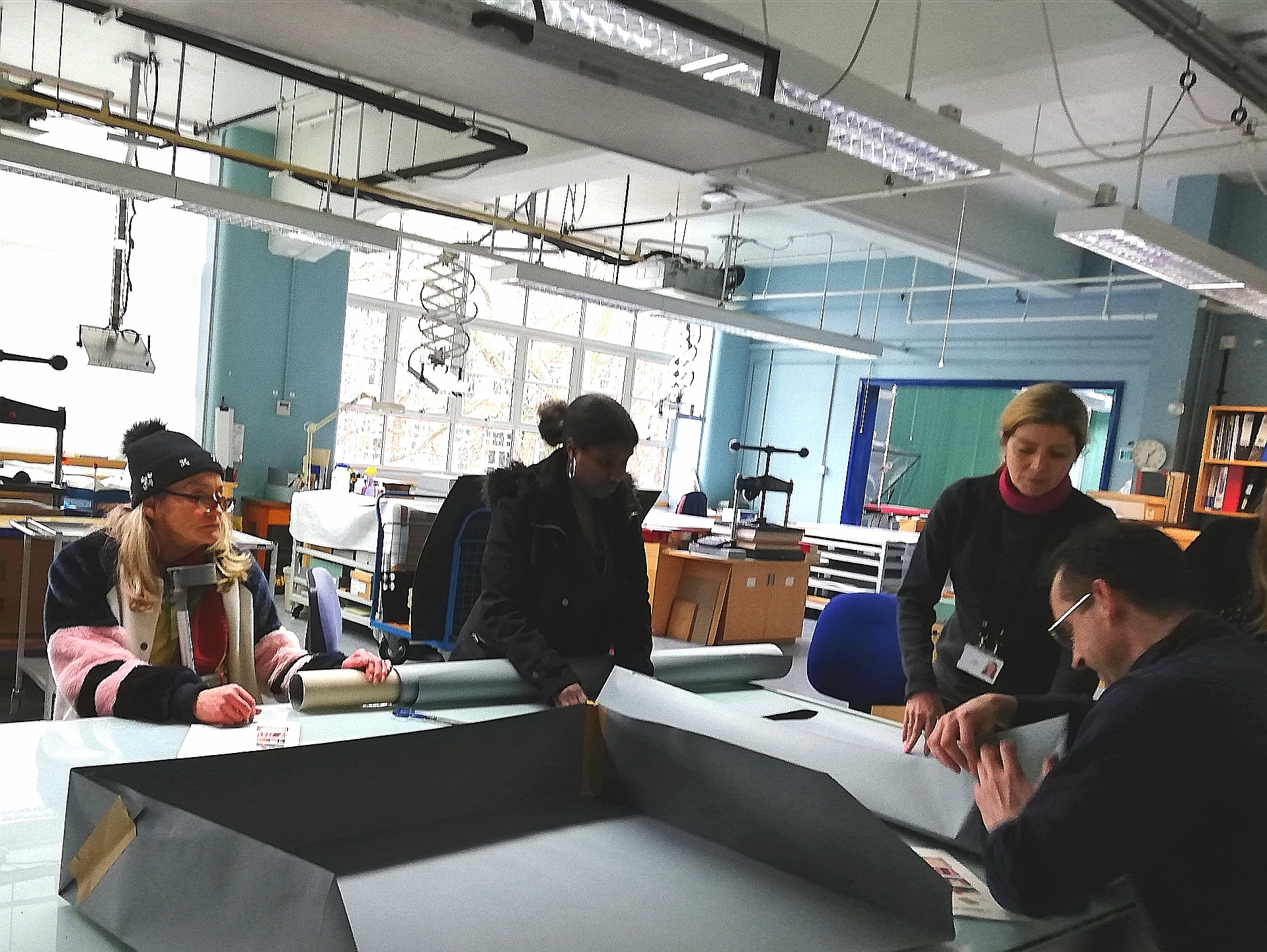
Cutting and folding the paper for the trays
When stored on a book shelf, dust enters the volume from above, with dust falling deep within the book if the pages are loose. That is another reason why it’s good to put heritage volumes in a protective box.
And, in order to keep our work space clean, we made paper trays so that the dust and other particles that get moved by cleaning were contained and not spread over the table or floor.
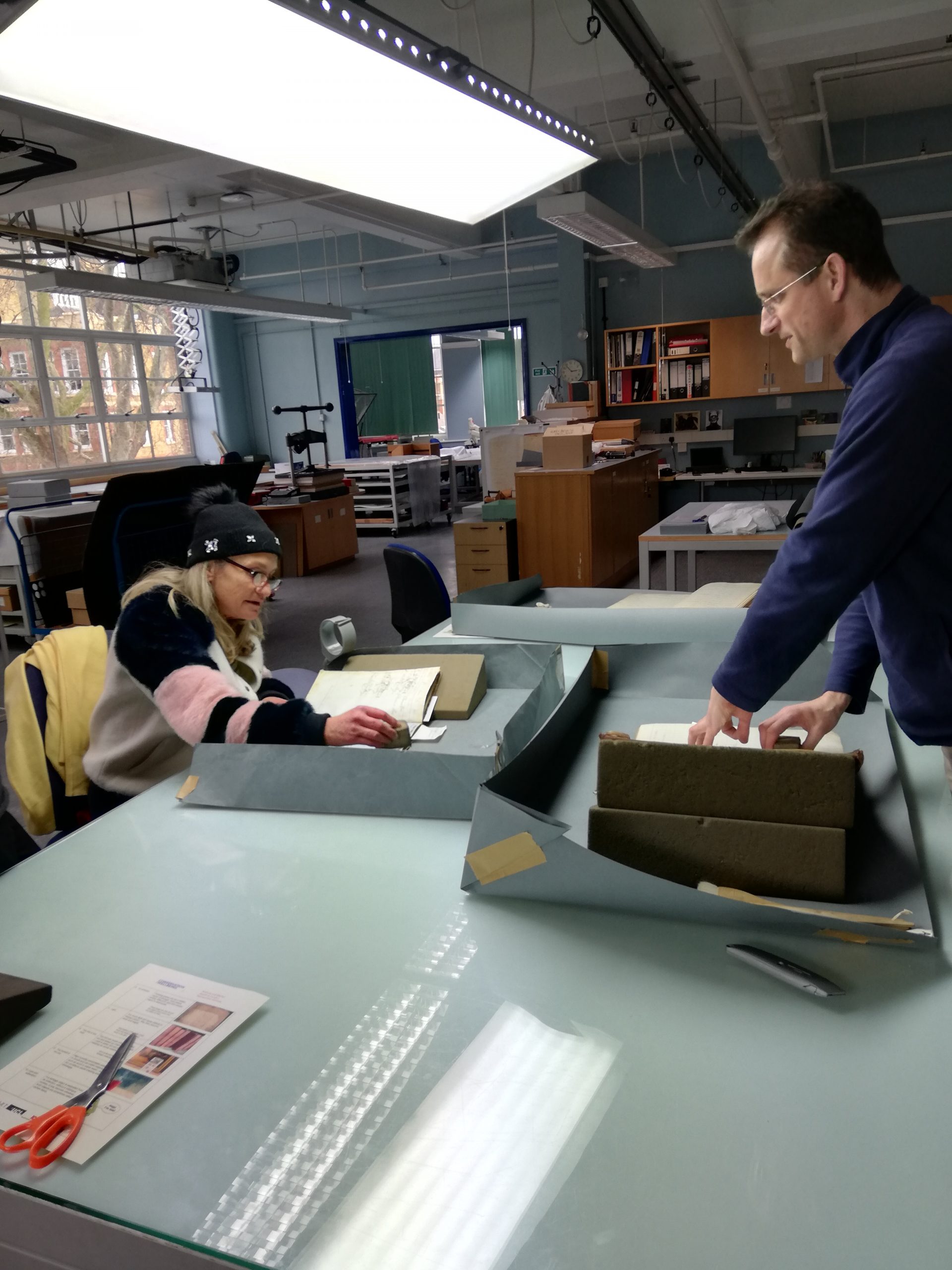
Cleaning volumes using foam book wedges to support the bindings
People worked either in pairs or individually and, after a break and cup of tea, we started cleaning the registers using soft brushes and latex sponges. The covers, which are leather or parchment, were not cleaned, we just concentrated on the pages.
The books vary quite a lot, some are large while others are fairly small and slim but they all needed the support of a foam book wedge to ensure that the bindings were not squashed flat on the table. These wedges are particularly important during cleaning as pressure is put on the pages, but they would also be needed if the registers are consulted in the search room.
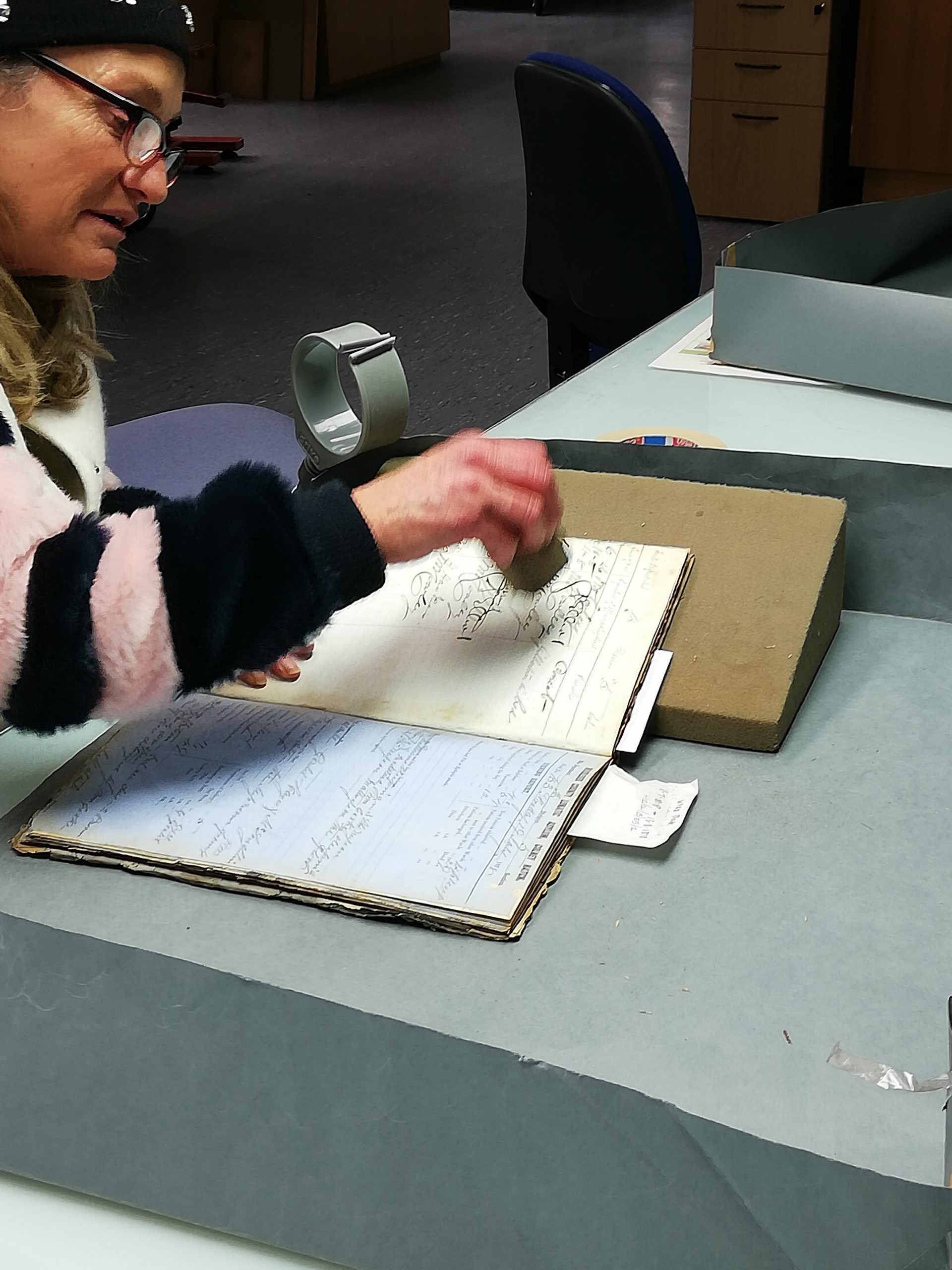
Some volumes needed quite a lot of cleaning
Once finished, each register was measured for a box. The boxes will be cut by Amy in the Boxing Room and by the next session they will be ready for folding and wrapping around their newly clean books.
